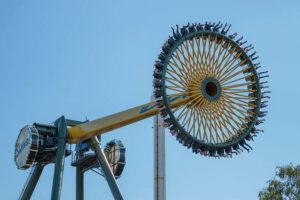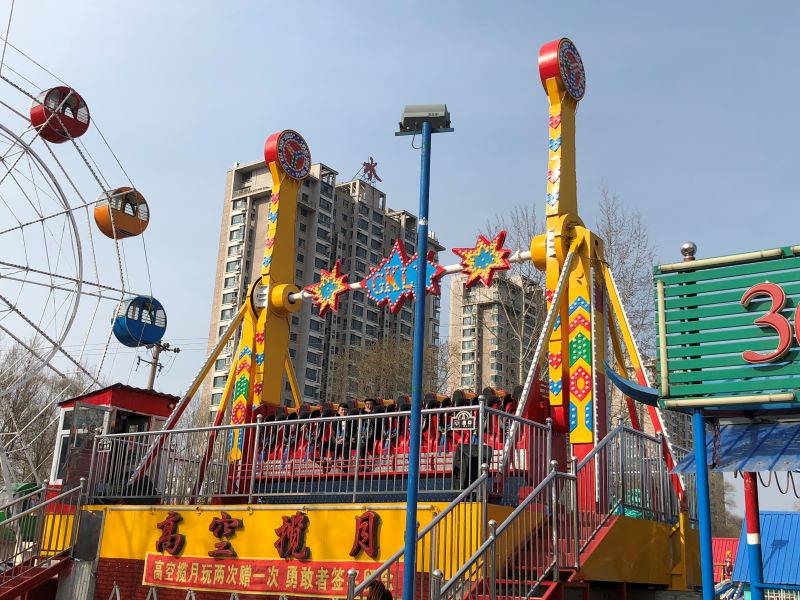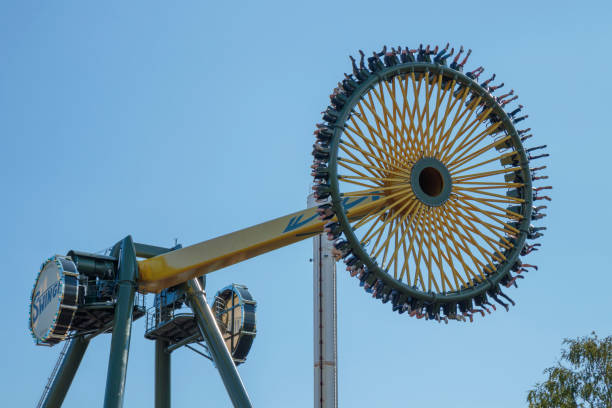
In the fast-evolving amusement park industry, operational efficiency is key to sustaining profitability and customer satisfaction. Leveraging data analysis has become one of the most effective strategies for optimizing ride performance, enhancing maintenance processes, and improving customer experiences. By utilizing data-driven insights, amusement parks can refine various aspects of ride operation, from scheduling to predictive maintenance, ultimately creating a more efficient and enjoyable experience for both park operators and guests.
The Role of Data in Amusement Ride Operations
The integration of data analysis into amusement ride operations allows park managers to identify inefficiencies, predict potential problems, and make informed decisions. Traditional methods of monitoring ride performance and maintenance, such as manual logs and periodic inspections, often lack the precision and responsiveness needed for modern amusement park operations. However, with the advent of sophisticated data analytics tools, it is now possible to monitor every aspect of ride performance in real-time, providing actionable insights that can significantly improve efficiency.
The collection of real-time data from rides, such as the number of cycles per hour, load times, ride duration, and maintenance history, enables parks to optimize ride scheduling, prevent downtime, and enhance the overall guest experience. For instance, if a pirate ship ride for sale is experiencing frequent delays due to operational inefficiencies, real-time data can help pinpoint the specific issues—whether it’s a bottleneck in the boarding process or a mechanical malfunction—and allow the park to address these concerns swiftly before they lead to a negative impact on customer satisfaction.

The Role of Data in Pirate Ship Ride Operations
Data-Driven Decision-Making in Ride Selection and Placement
Data analysis plays a critical role in the initial selection and strategic placement of amusement rides. When considering a Ferris wheel for sale, for example, parks can analyze data on guest preferences, traffic patterns, and even weather conditions to determine the optimal location and potential demand for the ride. Data-driven insights can also guide decisions about ride types that would best complement existing attractions, ensuring that parks maximize both foot traffic and overall guest engagement.
In addition to helping with ride selection, data analysis can optimize the operation of pendulum rides. These rides are often popular for their thrilling motions and visual appeal, attracting a large number of guests. By using data to monitor ride capacity, operational efficiency, and guest wait times, park managers can adjust ride configurations, staffing levels, and maintenance schedules to ensure that these rides remain consistently popular without compromising on safety or operational costs.
Optimizing Ride Performance and Safety
One of the most valuable benefits of data analysis in amusement parks is the ability to predict and prevent potential failures before they occur. Predictive maintenance, a process that relies heavily on data analytics, allows park managers to track the condition of ride components and schedule maintenance activities based on wear and tear. By collecting data from sensors installed in various parts of the ride, such as motors, gears, and hydraulics, parks can monitor the health of the equipment and identify any signs of malfunction or wear that might lead to a breakdown.
For instance, with pendulum rides, sensors can track the strain on the ride’s pivot points or monitor the hydraulic systems responsible for swinging motions. Anomalies in these readings can alert maintenance teams to address the issue before it results in costly repairs or, worse, an unscheduled ride shutdown. Predictive maintenance powered by data analysis not only improves safety but also minimizes downtime, ensuring that rides are always ready to operate when needed.
Additionally, ride operators can use data to enhance safety measures by monitoring crowd behavior and ensuring that operational standards are adhered to. For example, data analysis can help identify trends in load times and passenger distribution, enabling park operators to streamline boarding and reduce the chances of overcrowding or underutilization, which could impact both safety and efficiency.

Optimizing Pendulum Ride Performance and Safety
Improving Guest Experience through Data
Beyond operational efficiency, data analysis plays a vital role in improving the guest experience at amusement parks. By analyzing data on guest preferences, behavior, and feedback, parks can tailor their offerings to meet visitor demands more effectively. For instance, data analytics can reveal which rides are most popular at certain times of the day, allowing parks to adjust staffing and ride scheduling accordingly. Similarly, the analysis of guest feedback and social media sentiment can provide insights into areas where improvements may be needed. Beston Rides leverages data-driven strategies to optimize ride operations and enhance visitor satisfaction.
The use of data can also help enhance the personalized experience for visitors. For example, ride performance data can be combined with customer profiles, allowing for customized ride suggestions based on individual preferences and past experiences. This level of personalization enhances the overall experience for visitors, encouraging repeat visits and fostering brand loyalty.
Incorporating mobile apps and digital platforms that allow guests to track ride wait times, make reservations, and access exclusive offers also benefits from data analysis. By monitoring app usage patterns, parks can improve the app’s functionality, offering guests real-time information on ride availability, wait times, and park events, thus reducing frustration and improving satisfaction levels. Beston Rides supports amusement parks in implementing these technologies to create a seamless and engaging visitor experience.
Maximizing Operational Efficiency Through Data Analytics
The integration of data analysis into day-to-day operations is crucial for maximizing efficiency across various departments within an amusement park. By analyzing data on operational metrics such as ride capacity, guest flow, and staffing levels, parks can identify areas for improvement and make real-time adjustments to optimize performance.
For example, the efficiency of a pirate ship ride for sale can be improved by analyzing guest boarding times, operational delays, and wait times, allowing managers to streamline the process. Data-driven insights can also highlight peak hours of operation and suggest optimal times for maintenance, ensuring that rides are not down during periods of high demand.
Furthermore, data analysis can be used to optimize resource allocation. For example, by analyzing traffic patterns and historical data on ride performance, parks can adjust staffing levels during peak periods to ensure smooth operations. This minimizes operational costs while maintaining a high standard of service.
Conclusion
The application of data analysis in amusement ride operations has transformed how parks optimize efficiency, improve safety, and enhance guest experiences. Through the use of predictive maintenance, real-time monitoring, and guest behavior analysis, parks can ensure that their rides, from pirate ship attractions to ferris wheels, are operating at peak performance. By leveraging these insights, parks not only boost operational efficiency but also create a more engaging and enjoyable experience for visitors. As the amusement industry continues to evolve, data analysis will remain an essential tool for maintaining a competitive edge and achieving long-term success.